Selling your services as a content creator can feel like walking a tightrope. There's a pressing need to monetize your passion and skills, but the last thing you want is to come off as that pushy salesperson constantly making a hard sell. Let's face it: For many of us, self-promotion and sales feel about as comfortable as wearing your shoes on the wrong feet. We worry it'll make us look desperate or turn our audience off. I’ve been there and still struggle with it, so I’m trying to find better, less aggressive sales tactics that feel more approachable.

The reality is that most people don’t like being sold to. And when it comes to Gen Z? Forget about it. These digital natives have seen more ads before breakfast than most of us saw in our entire childhoods. They can sniff out a sales pitch from a mile away and are not interested in the tactics of the past.
But here's the kicker: Selling doesn't have to feel gross. There's a way to put your products and services out there in a way that feels true to you and actually connects with your audience.
8 things that turn people off about being sold to
Ever notice how some sales pitches make you want to run for the hills? It’s probably because the pitch felt aggressive or used tactics that created a false sense of urgency. In fact, data shows that 84% of buyers with a negative experience said the salesperson was pushy. Let's explore what might be driving your viewers away when you're trying to sell them something.
1. Excessive self-promotion
You know that friend who can't stop talking about their new car? Some content creators are like that; every post, video, or tweet becomes a commercial with a sales pitch. We get it—you've got bills to pay. But remember, your audience signed up for your top-notch content, not a 24/7 shopping channel. When you're always in sell mode, you risk losing the trust and interest you've worked so hard to build.
Sales expert Gary Vaynerchuck recommends an 80/20 approach: 80% of the time, you offer high-quality, high-value content without a sales pitch, and 20% of the time, you make a direct ask. By providing far more value to your audience for free, when you do make a sales pitch, it’ll feel well deserved (and tap into the psychology of reciprocity).
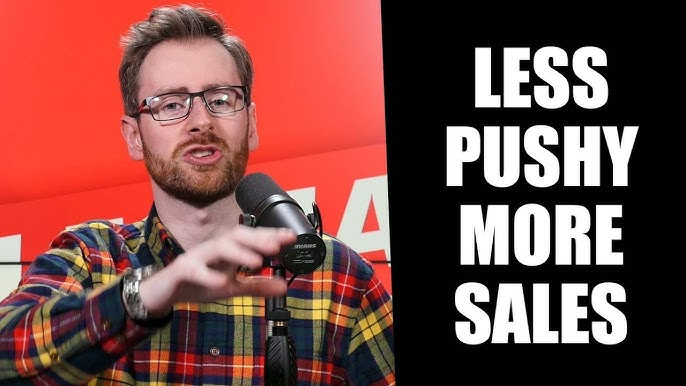
2. Lack of authenticity
Content creators who appear insincere or too focused on making a quick sale often lose their audience's trust. This is especially true for audiences of younger generations like Gen Z, who expect more from brands. When your audience doesn’t trust you, they’re not very likely to buy from you.
As digital marketer Neil Patel notes, “In exploring how to market to Gen Z, we must acknowledge that this demographic expects more from brands. They’re not just consumers—they’re participants in a global conversation, advocating for their beliefs and aligning themselves with brands that share their values.”
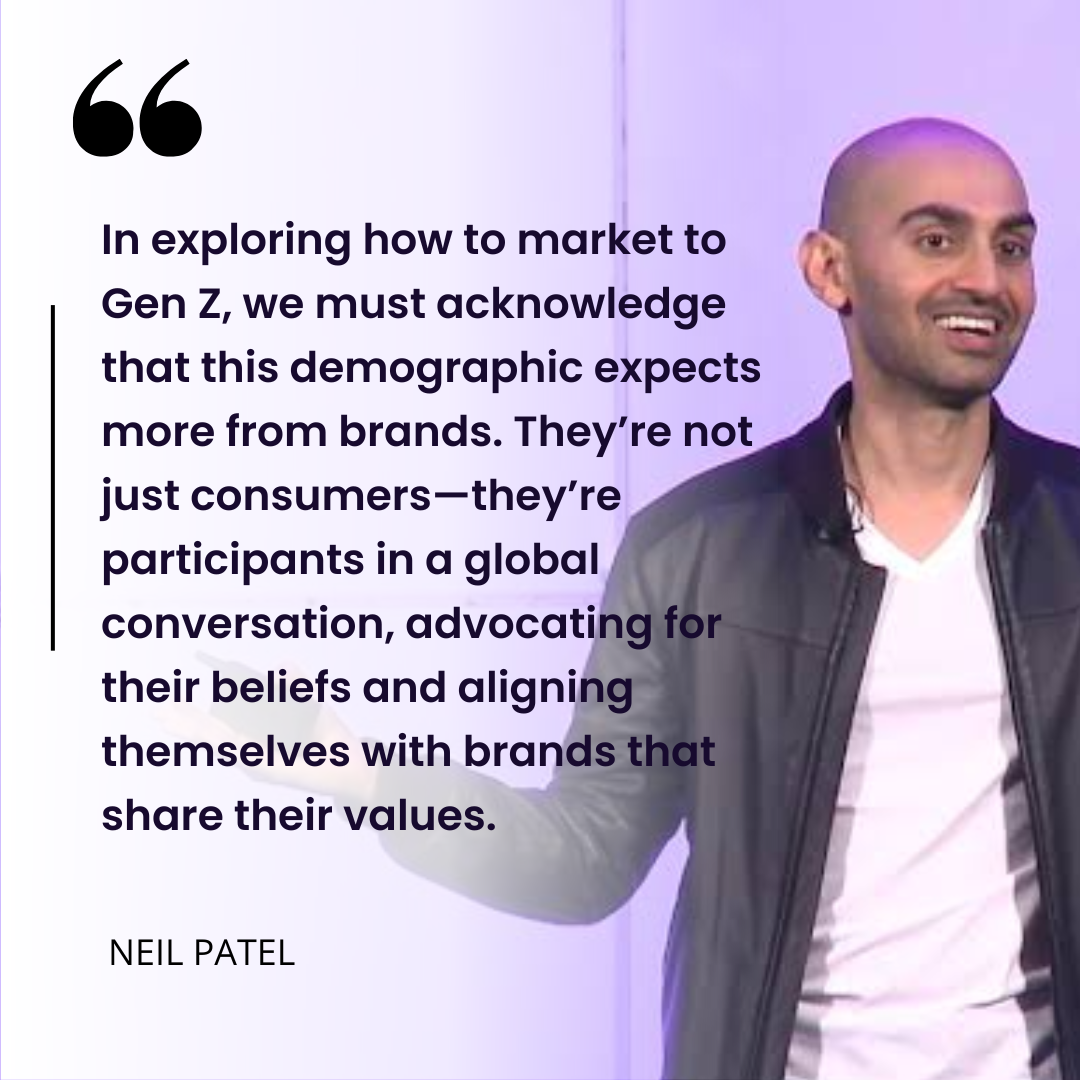
Work hard to establish your authority and expertise, share your personal story and background, and strive to build rapport with your audience before you start pitching sales of your products or services.
3. Aggressive sales tactics
Content creators who use high-pressure techniques or manipulative language in their sales approach are treading thin ice. A classic example is language like, "Buy now, this deal ends at midnight!" (Spoiler: It doesn’t.) Or worse, emotional blackmail: "Think about your kids' disappointment if you don’t get them X thing!"
These tricks don't just feel gross; they're a surefire way to send customers packing. People want honest conversations about their needs, not to feel like they're being pushed into a corner. Instead of creating a false sense of urgency, strive to address buyers’ pain points. There’s nothing wrong with leveraging scarcity as a marketing tactic (limited-time offers, limited product runs, etc.), but they should be used sparingly—not every single day.
4. Overpromising
Tai Lopez, a social media entrepreneur and motivational speaker, has been criticized for exaggerating his wealth and success strategies. His infamous "Here in my garage" video, which showcased luxury cars and books, led to accusations of overpromising quick and easy paths to riches through his courses and mentorship programs.
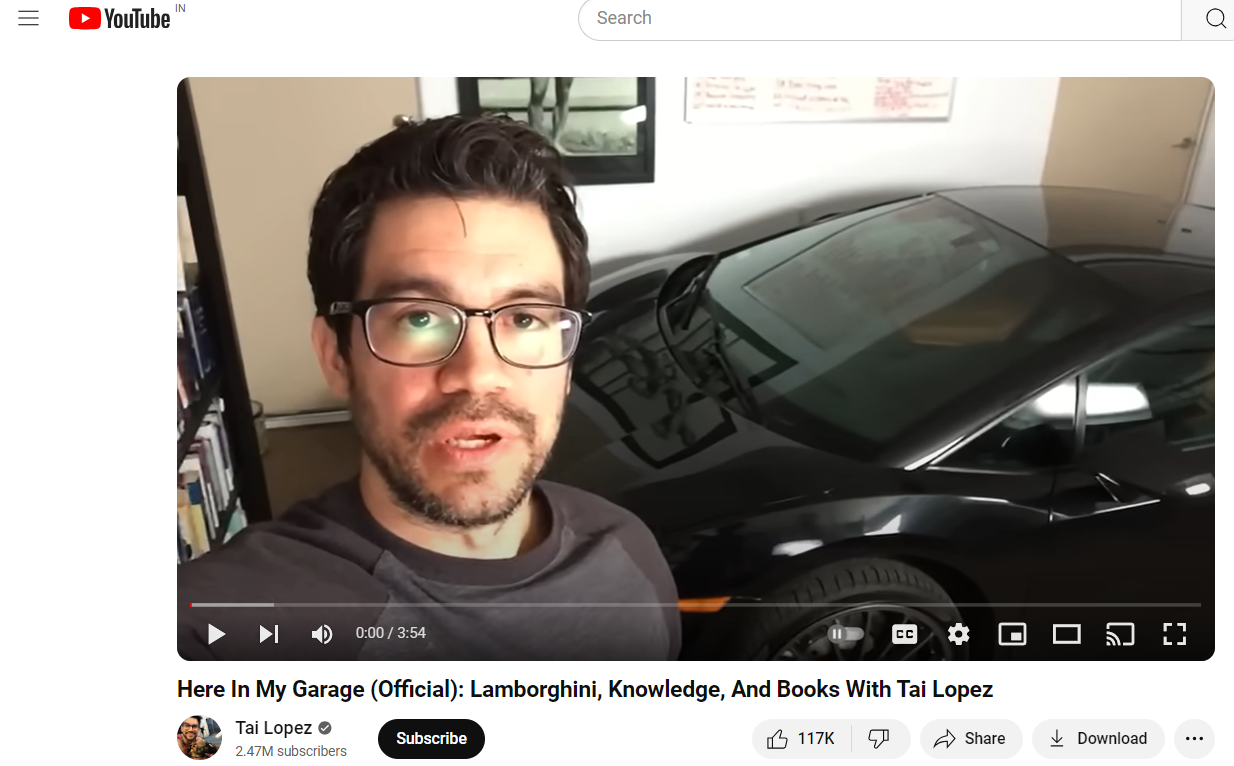
Here’s the thing: Overpromising may generate short-term interest, but it ultimately damages your brand reputation and customer relationships. Customers feel deceived when the reality doesn't match the hype, which leads to disappointment and negative word-of-mouth. A good rule of thumb is to keep your sales tactics grounded in reality with outcomes on which you can actually overdeliver.
5. Lack of transparency
Lack of transparency is a major turn-off, especially in the realm of influencer marketing. Many content creators fail to disclose sponsored content or affiliate relationships, leaving their audience feeling deceived. Popular beauty vlogger Jaclyn Hill faced backlash for not clearly disclosing sponsored content in some of her videos.
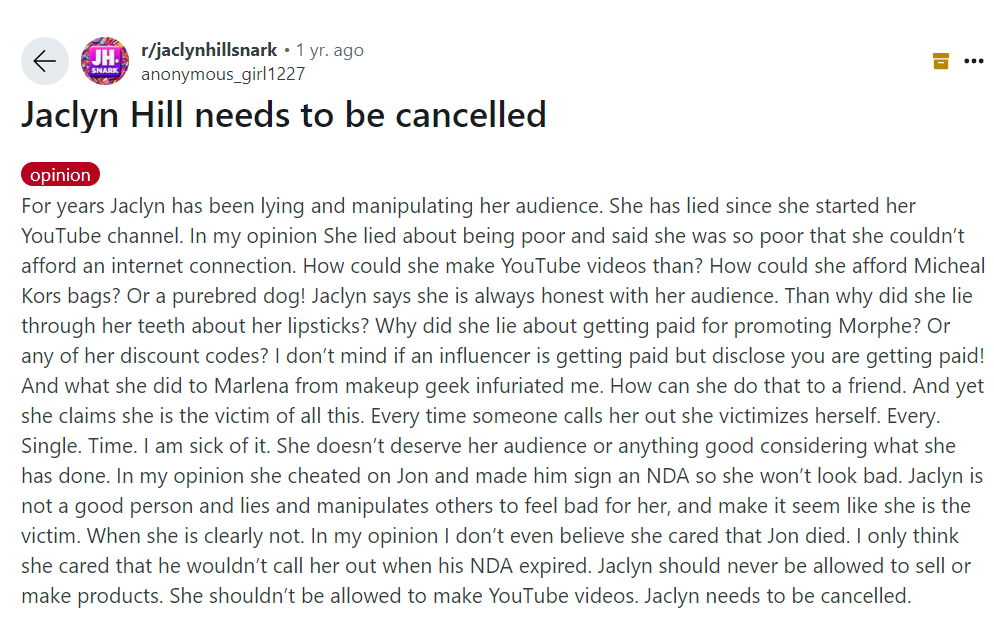
New FTC guidelines for creators are very specific about requirements for partnerships and disclosures. Creators selling products and not disclosing their behind-the-curtain brand deals are at risk of fines and federal repercussions, as well as destroying their personal brand's reputation. If you’re unsure what should be disclosed, a good general rule is to disclose whenever money or value has exchanged hands. Remember: “When in doubt, call it out.”
6. Spamming
No one loves a barrage of repetitive messages cluttering their inboxes, social media feeds, and comment sections. It’s borderline harassment. With many content creators indiscriminately using tools like ChatGPT to craft promotional messaging that lacks a human touch, spamming has become a real problem.
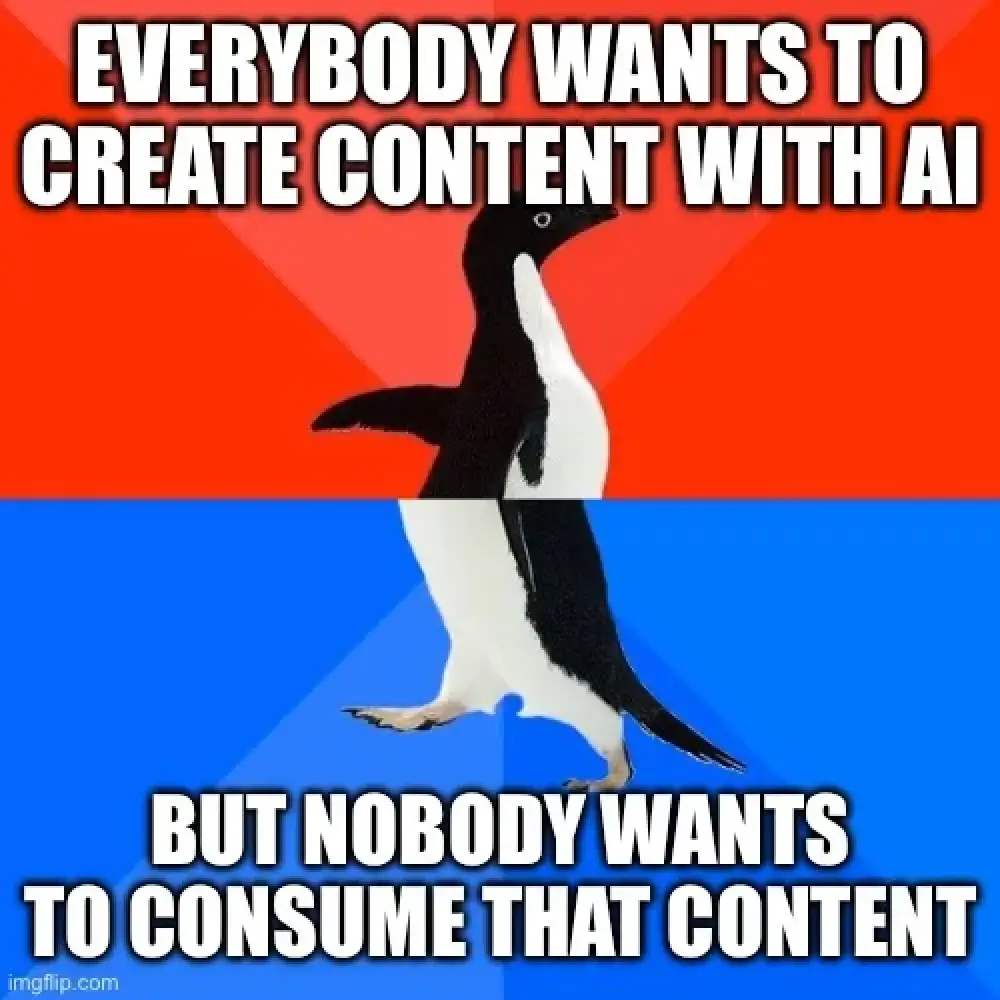
Sometimes called the "spray and pray" approach, spamming not only diminishes your credibility but also breeds resentment among your target audience. Instead of attracting interest, it can result in blocked accounts, unfollows, and a tarnished reputation.
Smart marketers recognize that quality engagement trumps quantity in the digital age.
7. Ignoring feedback
When a creator brushes off buyer concerns or doesn't respond to negative reviews, it's like telling customers their opinions don't matter. Not a great look, right? Instead, give your audience members a voice and let them inform how you sell. How? A forum can create a community around your offering and bring people into the fold.
According to Salesforce, “91% of customers say they're more likely to make another purchase after a great service experience.” That’s a good reason to listen to your customers and audience members. Be proactive about listening to their questions and concerns and address feedback (both good and bad) as quickly as possible.
8. Lack of social proof
Don't you want to know what others think when considering a purchase? That's where social proof comes in. It's a big turn-off when sellers fail to provide testimonials or evidence that their product actually works. Customers seek validation from other people's experiences before committing to a purchase. Amanda Goetz, seasoned entrepreneur and marketing leader, offers a masterclass called “The Ultimate Guide to Success Without Burnout.” The testimonials on her website offer social proof of the effectiveness of her offering and help potential buyers feel more certainty about the fact that what she’s selling is something they’ll benefit from.
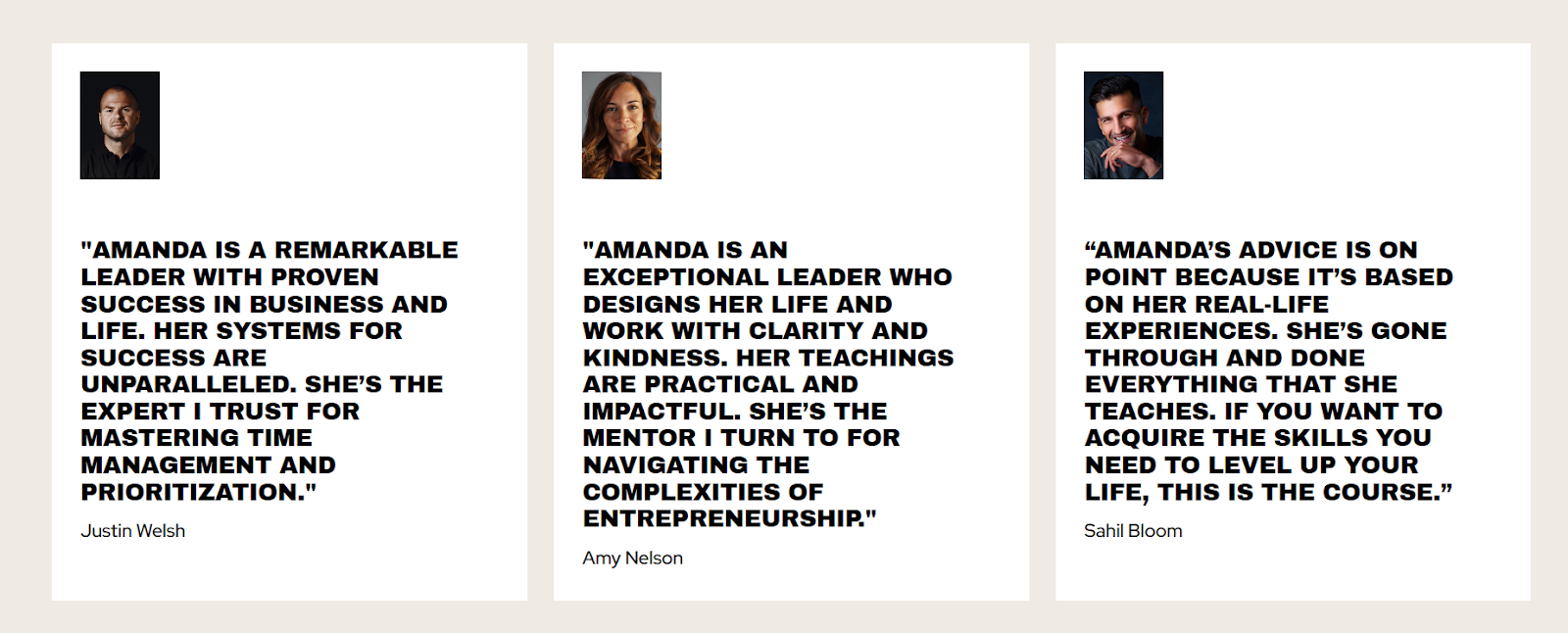
How to sell a service without being pushy
According to a study by the University of Southern California, overly aggressive or pushy sales tactics can reduce purchase intent by up to 49%. Let’s look at how you can gently guide your audience towards your product or service without being annoying.
Focus on the audience, not on you
First and foremost: Take time to understand your audience’s pain points and build rapport.
Instead of steering conversations towards your product or service, focus on their needs. Ask thoughtful questions to build relationships, understand their needs, and resist defaulting to rehearsed pitches. Instead, show genuine interest in their problems. Asking questions disarms and takes the focus off the sales process.
With tools like Instagram’s question feature on Stories, “Ask Me Anything” (AMA) sessions on IG, or live streaming on YouTube, you can find out what your audience is interested in via real-time back-and-forth communication.
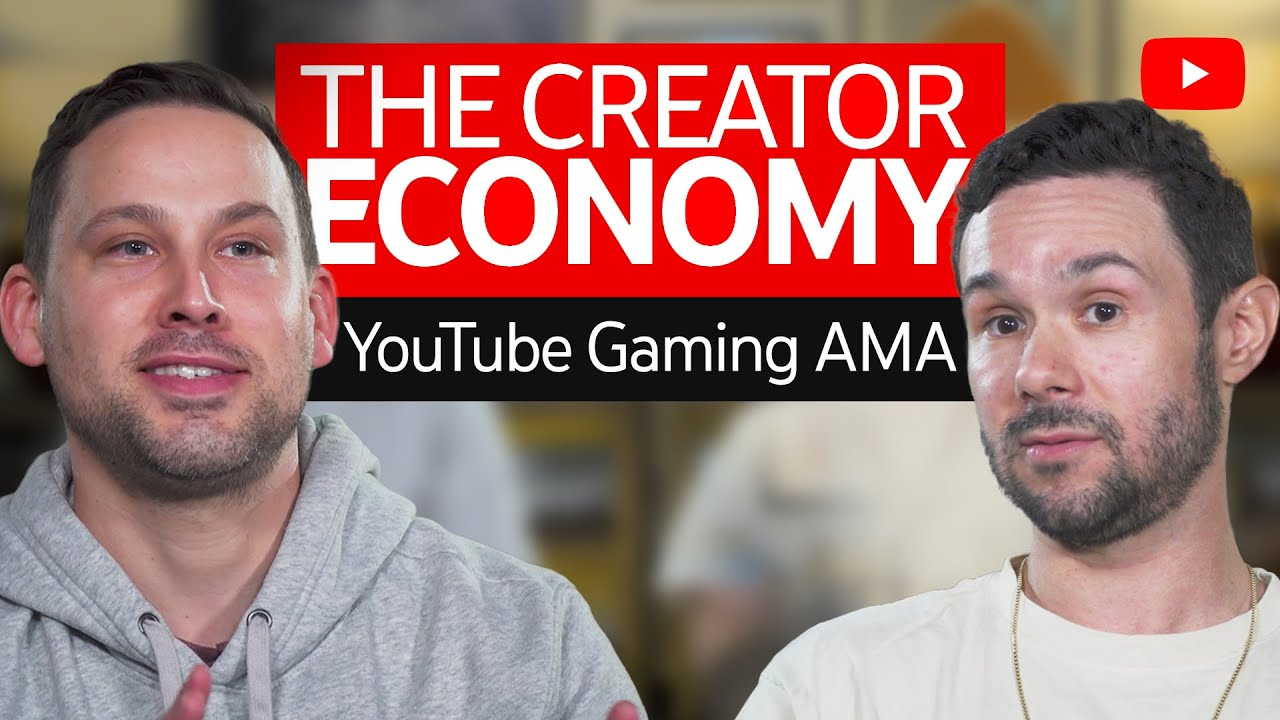
Sahil Makhija, AKA Headbanger Eats, has established himself as a meat influencer via his restaurant recommendations and cooking videos. In a recent Instagram story, Makhija conducted a poll to find out whether there were aspiring content creators among his audience. The poll revealed that 30% of respondents were interested in content creation. Makhija immediately followed that up with an invite to a creators' meetup to chat about the business of content creation.
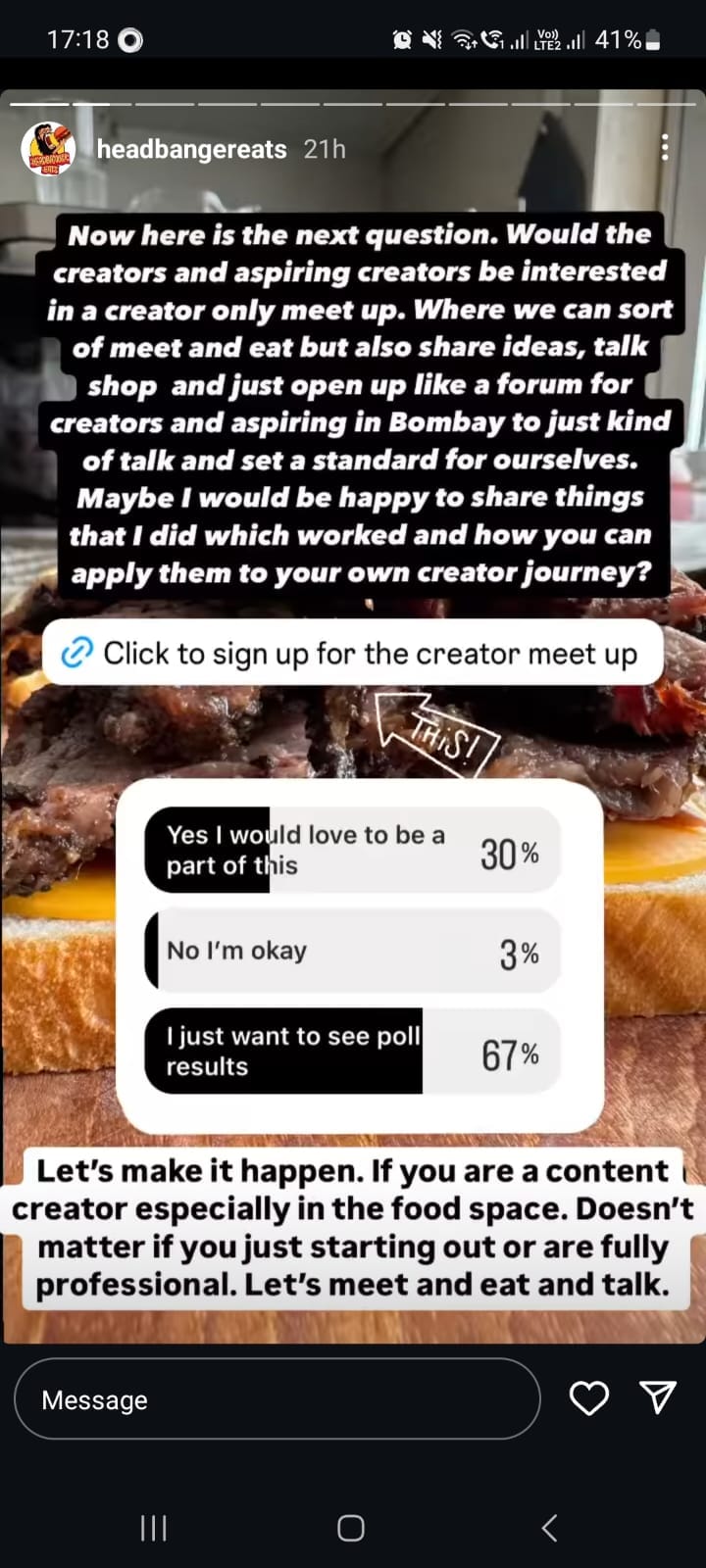
Makhija also set up a wildly successful Whatsapp channel, “The Serial Eaters Club,” to be where his audience is, engage with them, and promote his food-related services.
Spotlight the problem
You have a solution to a problem (whatever it is you’re selling). Now, your job is to tactfully make your potential customers realize they have that problem and then quantify it in terms of either risk, revenue, or cost.
An example of this done well is seen via Marie Forleo, an established business and life coach. Her content strategy effectively uses this technique, particularly with her B-School program. On her YouTube channel "MarieTV" and her podcast, Marie often cites statistics about the failure rates of small businesses and the potential income lost by not having the right business skills. She emphasizes the opportunity cost of not taking action, often sharing stories of people who delayed starting their businesses and regretted the lost time and potential income.
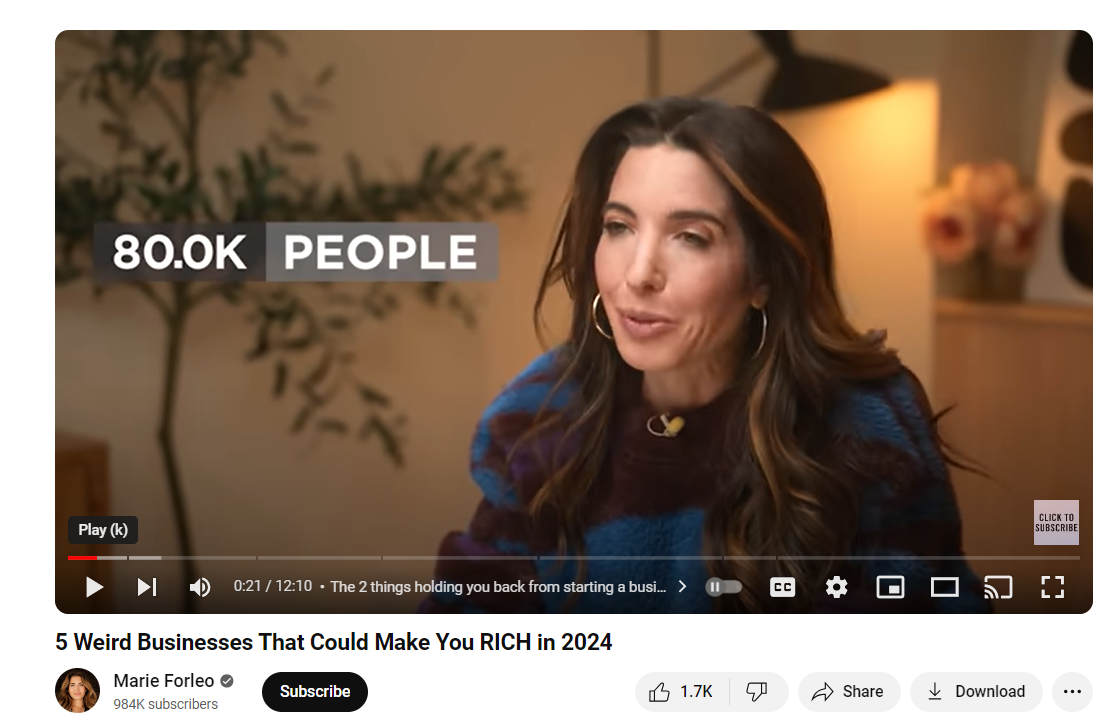
Marie positions her B-School program as a comprehensive solution to these challenges: A program that offers the skills and community support one needs to build a successful online business. She also features success stories from B-School graduates, quantifying their results in terms of increased revenue, improved work-life balance, and personal fulfillment.
When you think about your own offering, be sure to position it as the solution to a problem or pain point. Educate your audience about why it’s a real concern and then how what you’re selling can make those concerns go away.
Offer real value
Offering genuine value is key to non-pushy selling. It’s a good idea to offer a lot of free content to provide value, but when you’re ready to move the customer toward closing a sale, you can switch to gated content, wherein the interested audience member shares something like their email address for higher-value content.
Take inspiration from nutritionist Amita Gadre, who follows the golden rule: “Be helpful.” She picks relevant nutrition topics and goes live on her Instagram page, providing free, valuable information to her audience.
When viewers ask questions, Amita offers basic solutions in the comments, then naturally introduces her nutrition programs to receive more personalized guidance. This establishes trust and showcases the benefits of her paid services. Amita nurtures potential clients organically and without aggressive promotion, by pointing viewers in the right direction.
Melanie Deziel, a content marketing expert, is another good example. She offers some of her products at a price point as low as $9, so her audience can experience the value she offers with little risk before investing in her more expensive products.

Make your audience feel comfortable
This might seem obvious, but many people working to drive sales miss this tip in a big way. Do what you can to make your audience feel comfortable from the start by using a bit of humor or small talk to meet them on common ground.
If you know your followers enjoy certain topics, naturally weave them into your content. Whether it's discussing a shared hobby or addressing common challenges, create a connection. Remember, people are more likely to trust and support someone they feel comfortable with and it will make your audience more receptive to your offerings.

Get creative with tonality
Pushy sellers often stick to a relentless, high-energy tone that exhausts listeners. Instead, play with your vocal palette. When recording videos or audio, shift your tone from authoritative to conversational, enthusiastic to thoughtful. Alternate between rapid-fire excitement and measured pauses that allow your message to breathe.
By varying your tone, pace, and volume, you'll keep your audience engaged and receptive, transforming your pitch into a dynamic conversation that feels natural and compelling. Malaysian content creator and comedian Nigel Ng, popularly known for his "Uncle Roger" character, does this well. He interjects his videos with the "Haiya" we’ve all come to love, an expression of disappointment or frustration.

Align your call-to-action with the buying stage
Just because you can tell a buyer suffers from a specific pain point doesn't mean they've realized it yet. So even if a call to action (like a one-on-one call with you) will eventually be useful for them, offering it when they're still in the education stage of the sales funnel (see picture below) can seem pushy and self-serving.
Instead, focus on educating your audience about their challenges and guiding them toward solutions. Gradually introduce how your content or products fit into those solutions. Offer value-packed freebies or low-commitment options for those in the early stages—think ebooks, short guides, or free trials of premium content. As your audience becomes more aware and engaged, you can introduce more direct calls to action.
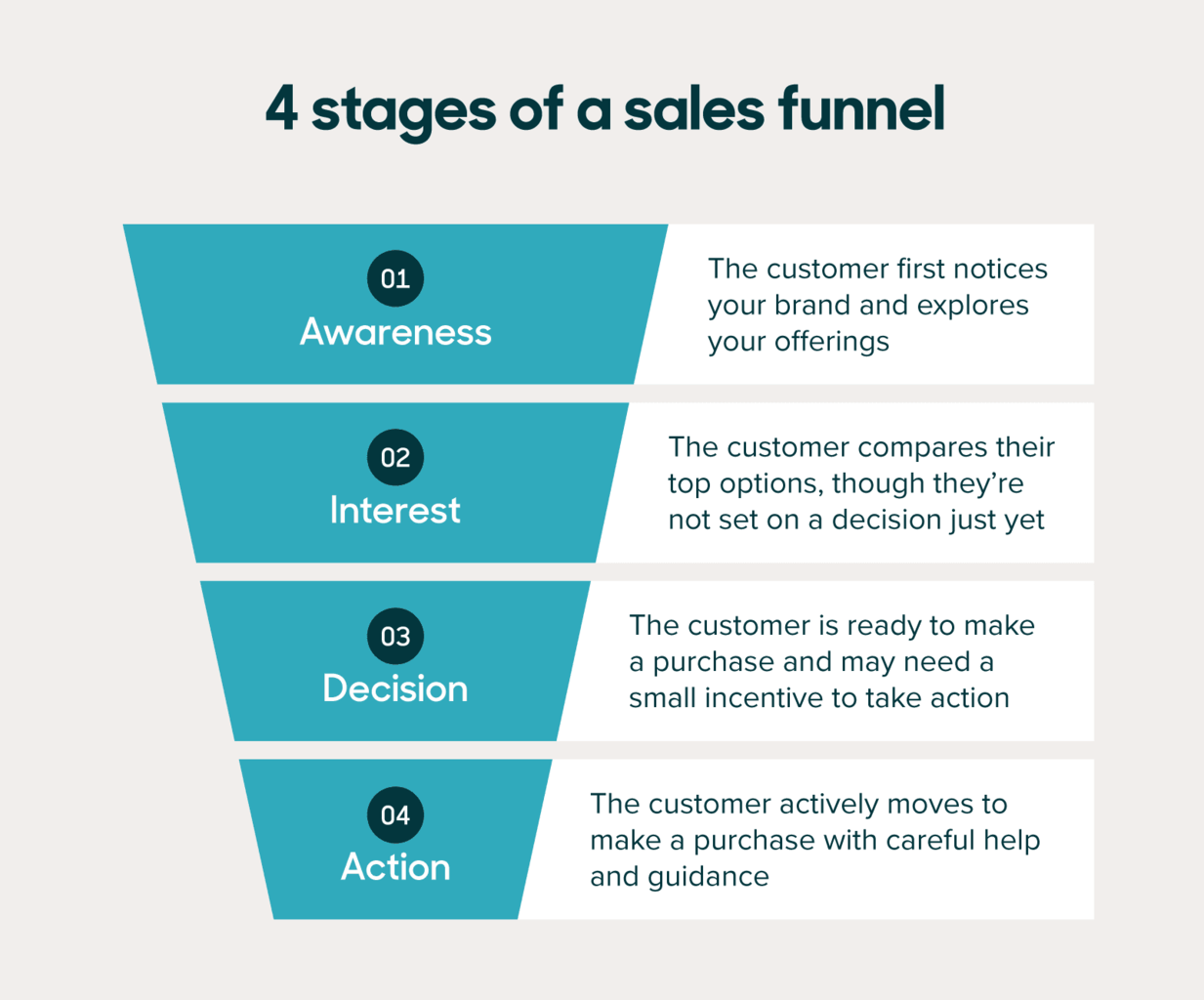
Classic mistakes when selling online
Even seasoned marketers sometimes make these mistakes in a bid to make a quick sale. Here’s what to avoid doing as a content creator trying to sell a product or service.
Talking about your product right away
Your product is great! Why wouldn't a prospect want to hear about it? Right?Wrong! Leading with your product in your content is counterproductive because it can come across as self-centered and pushy. Unless your audience is already invested in your work, it's more effective to start by addressing their needs and pain points. Focus on the value you provide and how your content can transform their lives or businesses.
Being fixated on one channel
Just because you have someone’s email address, it doesn’t mean you need to keep reminding them about your offer week after week. The same holds true no matter which channel you're using.
Repeatedly pushing your offer through the same medium—email, social media, or calls—risks audience fatigue. Your followers may start ignoring or even resenting your messages. Creators like Matt Giaro diversify their approach. On LinkedIn, Giaro advertises his lead magnet, a free course on “Turn Your Ideas Into Income With A Smart Online Content System.” Subscribers receive a series of newsletters in which he nurtures relationships and cross-promotes his other products, such as courses and guidebooks. If subscribers disengage, he re-engages them through varied social platforms, understanding that audience discovery happens across multiple touchpoints.
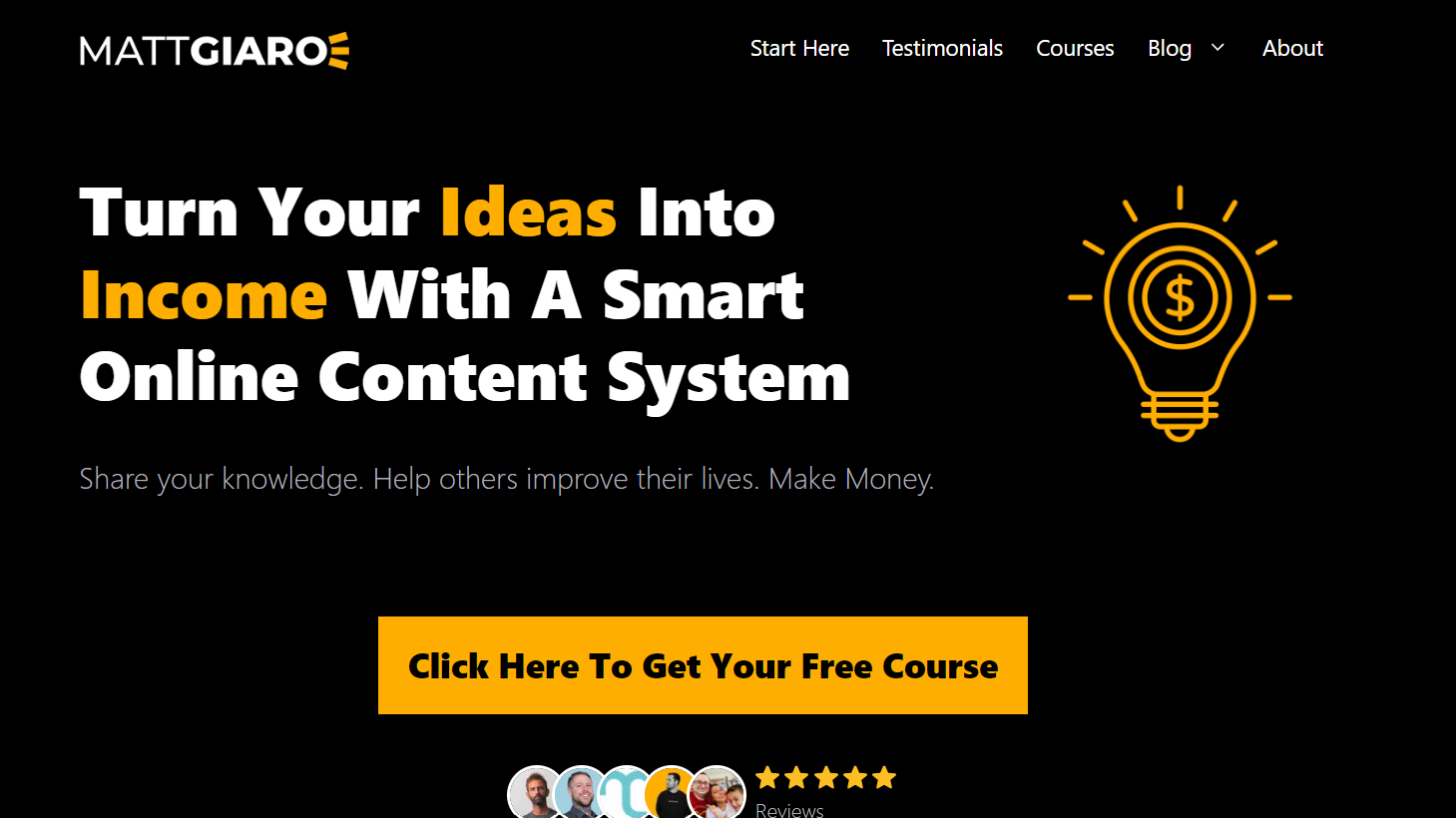
Sounding desperate
Desperation often surfaces during high-pressure situations like product launches, where a creator's income relies heavily on short-term sales or limited-time offers when sales targets still need to be met. Some creators might overshare financial woes or react anxiously to algorithm changes affecting their reach.
However, desperation can backfire spectacularly. Even if your product is amazing, desperate tactics can plant seeds of doubt about its quality and value. This skepticism may extend to future offerings, potentially damaging your brand long-term and leading to fewer sales or conversions.
Putting down competitors
Content creators often fall into the trap of criticizing competitors. Your personal brand can take a serious hit if you do this. It might seem tempting to throw a little shade for quick attention, but trust me, it's not worth it in the long run.
Your audience doesn't want to feel caught in the middle of creator drama. We've seen plenty of examples of creators getting into public spats or making snarky comments about their peers.
Jenna Marbles, a former YouTube star who stepped away from content creation in 2020 partly due to controversies surrounding her past content said, “Cancel culture has become so toxic. We've created a society where people are afraid to speak up, afraid to be who they are, afraid to have opinions. It's not about accountability anymore; it's about tearing people down. As creators, we need to foster an environment of growth and learning, not fear and retribution."
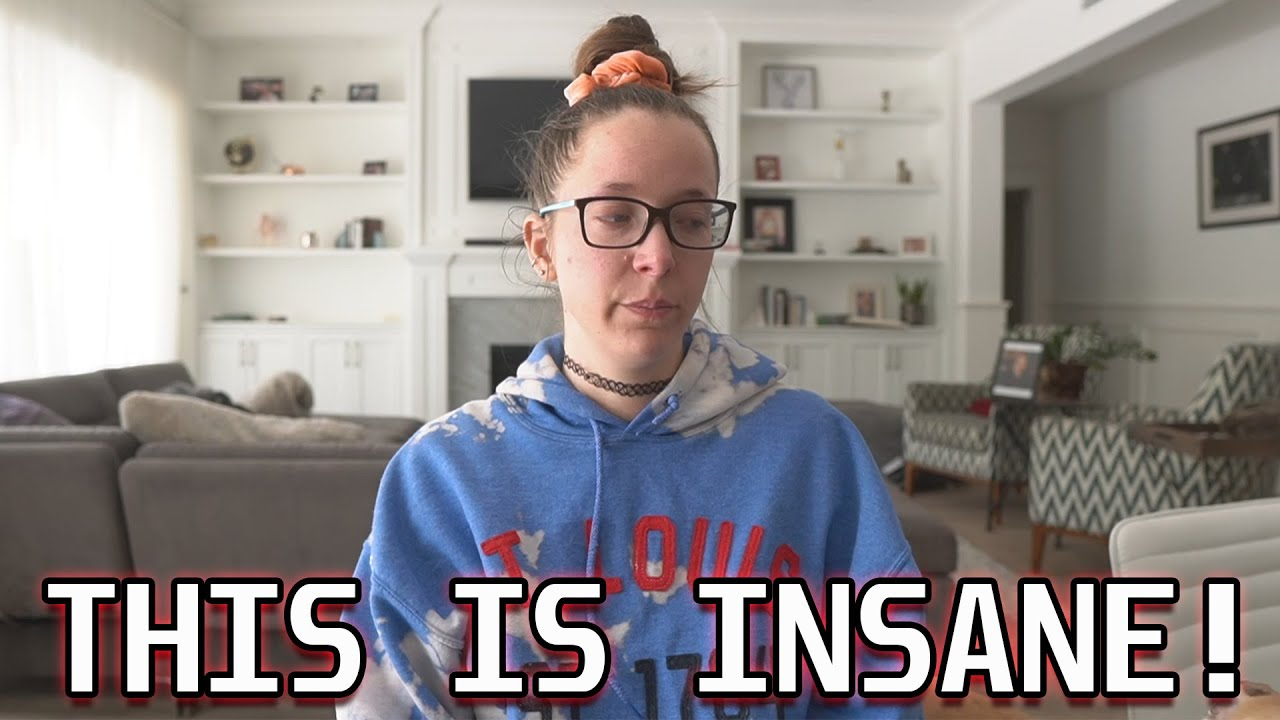
Selling your digital products on Whop
Finding the right platform to sell your services can be challenging as a content creator. Whop is one option that's gained attention in the digital marketplace. Whop's user-friendly interface caters to a variety of digital products and services. Whether you're offering software, online courses, ebooks, consulting services, coaching sessions, or even membership and subscription models, Whop provides the perfect stage for your offerings. The all-in-one platform offers you access to your target audience, built-in payment processing, and marketing and promotion tools so you can hit the ground running as soon as you have a product to sell.
While Whop provides the platform, success still depends on your strategy. Here are some approaches to consider:
- Social media integration: Use your existing social channels to showcase your expertise and direct interested followers to your Whop offerings.
- Email marketing: Building an email list can help you maintain contact with potential customers and nurture long-term relationships.
- Creator collaborations: Partnering with other creators in your niche or complementary fields can help expand your reach.
Start selling without the pushy tactics
In the world of content creation, selling doesn't have to come via a hard sell. Selling starts with establishing a connection with your audience, building rapport, and earning their trust.
“The best way to approach connection-building is by taking a service-driven approach to people,” says Shep Gordon, the celebrity manager behind the likes of Alice Cooper, Emeril, Blondie, and many others.
If you look at the most successful content creators who are crushing it with their product sales, you'll notice they all have something in common. They're not pushy, they're not in your face, and they're certainly not begging for sales. Instead, they're all about building real connections, showing off their skills, and focusing on what their audience actually needs.
It's like they're saying, "Hey, I've got something that might help you out," rather than, "Buy my stuff now!" Remember, it's all about finding that sweet spot where your talents meet someone's needs.
So, keep it real, keep it valuable, and the right clients will come knocking.




